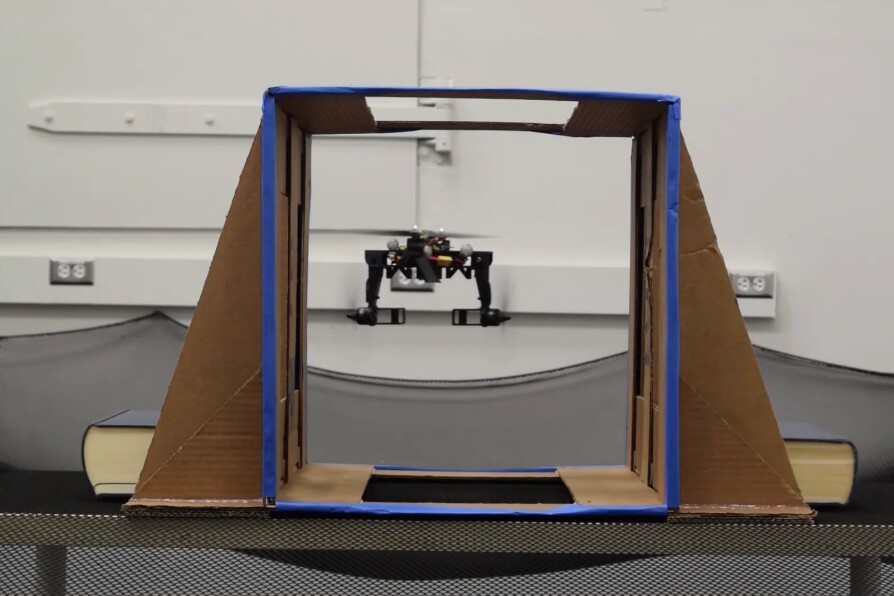An experimental drone has brought a solution for the arms of drones hindering its functionality. The model has arms that passively fold down as needed.
There have been quadcopters that can reconfigure themselves in mid-flight by using electric actuators. This adds another complex electronic setting to the model.
Therefore, scientists at UC Berkeley’s High-Performance Robotics Laboratory (HiPeRLab) have developed a Midair Reconfigurable Quadcopter, which uses unactuated hinges. It only needs gravity or reverse thrust to cause each of its arms to flop down when required.
This setup makes several maneuvers possible. If the horizontally traveling drone needs to squeeze through a narrow vertical opening, it reverses the direction of thrust on two opposing arms, causing them both to fold down. Because the thrust axes of those arms are offset from one another (the drone’s body is rectangular, not square), the yaw torque produced by them counteracts the yaw torque produced by the other two arms.

Consequently, the vehicle can smoothly and stably pass through the opening. Because the two folded-down arms are pushing in toward one another, they can also be used to grasp a flat-sided box by pinching it from either side. That box can then be lifted, flown, and released at another location
Also, if the hovering drone needs to drop down through a narrow horizontal opening, all four of its propellers reverse their direction of thrust, causing all four arms to fold down. As the copter proceeds to free-fall, its vertical orientation is controlled by varying the thrust of the props relative to one another. Once it has passed through the opening, the thrust is reversed back to its original state. This causes all the arms to rise back up again, enabling the quadcopter to resume hovering before moving on.
Lastly, if the drone needs to just sit, it can land on that line and then shut off all of its propellers. This causes all four of its arms to drop down, shifting the copter’s center of mass below its point of contact, keeping it balanced on the power line.
The Midair Reconfigurable Quadcopter was first talked about in a 2019 paper published in the journal IEEE Xplore. The study was led by Ph.D. student Nathan Bucki, Asst. Prof. Mark W. Mueller and researcher Jerry Tang.


